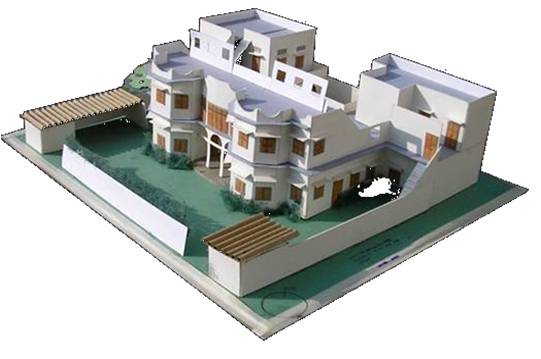
Traditional Dwelling in Jaipur (Paper Model)
BRIEF:
The essence of case study is to understand and analyze the vernacular architecture in form of traditional dwelling in light of climatic & geographical consideration, family structure & customs, planning & design, and building technology & material.
INTRODUCTION:
- The house belongs to an affluent family of the town and is about 70 yrs old.
- The house was designed and built in during the colonial period with rapidly changing Indian society and new life styles, therefore reflects the features of the period.
- As the house is now divided into two halves each belonging to the two brothers, defines how a dwelling modify itself over time.
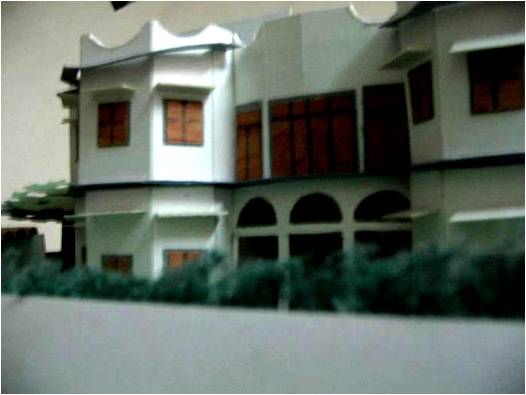
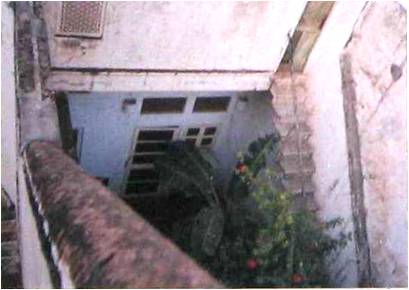
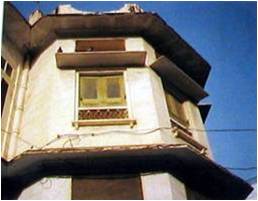
Views of the Dwelling
ABOUT THE SITE:
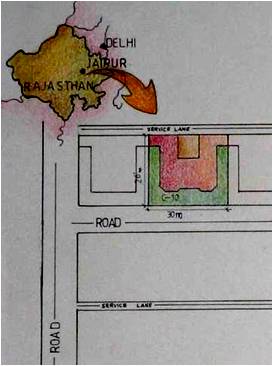
LATITUDE:-26.52 N LONGITITUDE:75.50 E
- The site lies in the city of Jaipur, capital of Rajasthan. It was the first planned colony that came up outside the main walled city, around early 20th century.
- It acts as a link between the traditional Rajput architectural setup and that of planning of modern Jaipur.
- The roads run parallel nd perpendicular to each other with service lanes.
- It is in form of bungalow system surrounded by houses of same status and period.
- It is in close vicinity to railway station, bus stand and main markets.
DESIGNING AND PLANNING:
- The house stands well in approxmately square plan with nearly 55% of carpet area.
- The plan well facilitates the need of the family and the customs they follow.
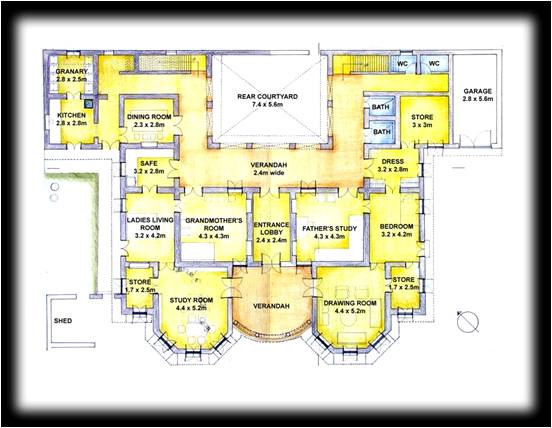
GROUND FLOOR PLAN
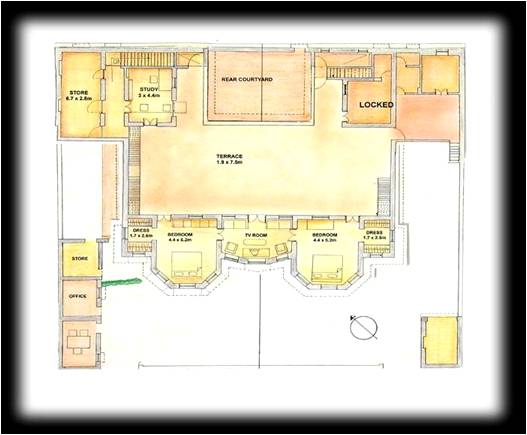
FIRST FLOOR PLAN
Features:
-Courtyard house.
-Mirror image along central axis into halves.
-Two flights of stair case.
-First floor construction in three parts.
-Bedroom on southwest.
-Pooja & study in north.
-Guest room & servants quarter in east.
ELEVATION:
- As the building was built in the colonial period it reflects the elements of influence like the pillars & the arches.
- The façade is colored white blended with Jaipur style.

Views of the Elevation:
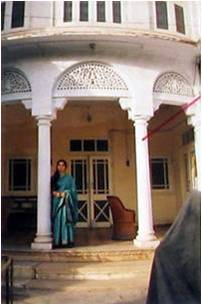
Arches with stone columns and brackets with jaipuri carved jalis.
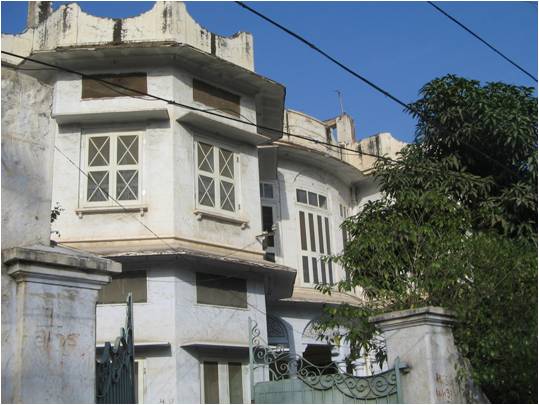
Big windows with ventilators.
SECTIONS:
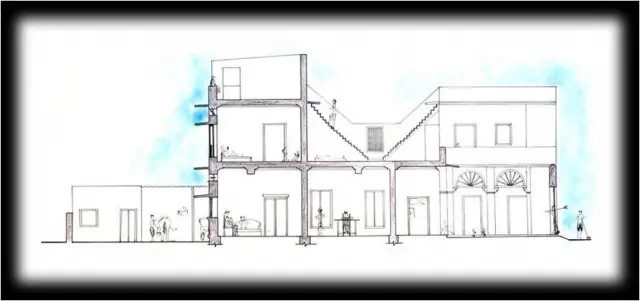
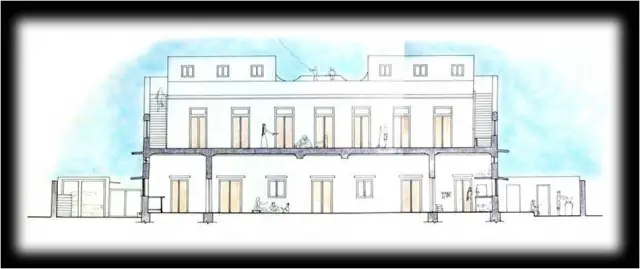
Views of Interior:
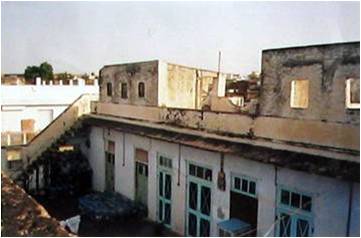
First Floor Terrace
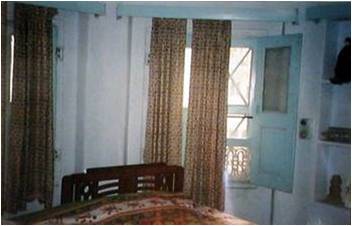
Room Layout
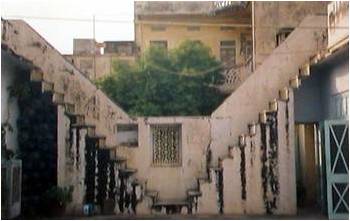
Typical Staircase in Jaipur
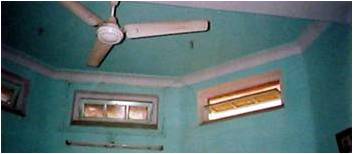
Ventilators in a Room

The courtyard is the core area of the house hold activities with circumferential verandah and aid in light and ventilation.
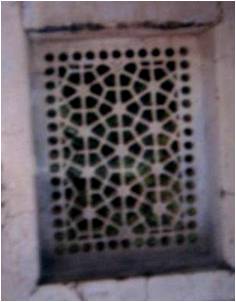
As told the cornice are painted with flowers and leaves design in vegetable and natural colors.
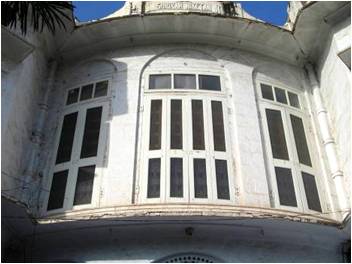
There are large windows with low sill for ventilation is also typical to hot climate.

The rooms in the façade are chamfered at 45, and forms two octagonal volumes vertically, which is unique to Jaipur and can be seen in many buildings of the old city as in Hawa Mahal.
KEY DESIGN GENERATORS:
- Climate and Geography: composite climate, hot-dry and dusty summers with moderate rainfall, winters with warm dry days & cold nights.
- Courtyard to support ventilation.
- Big windowds with low sill.
- High ceiling to increase comfort levels.
- Construction: stone the basic construction unit – lime is used as binding material
- Big stone pillars used in elevation.
- Complete rubble masonary.
- Kota stone flooring.
- Customs and Rituals: daily pooja by pandit – girls received education at home – sweepers allowed in restricted area only.
- Pooja Room (Praying Room) & WC (western comode) kept on opposite side of central axis.
- Clear division of house into public & private area.
- Provision of study.
- Separate entry & staircase for sweepers.
- Family Structure: head was a medical doctor – wife expired early – four sons & two daughters – elderly mother and 2 sisters – 3 to 4 cousins to study – 3 full time sevants – regular visitors – tutor was pandit (Indian priest)
- Big house with number of rooms.
- Doors opening into each other interlinking the whole house at the cost of personal privacy.
- Assets:2 cars and 2 horses – cooking done on stoves & klins fueled by wood & coal – annual food for big family.
- Added storage for the above assets like garage, granary, stores.
ZONING AND SPACE TYPES:
As seen in most of vernacular planning, due to social customs, the whole house is clearly divided into public & private zones.
In this case:
- The right half is the public zone or men’s area, which belonged to the head of the family.
- The left half is the private zone with study, bedrooms specially for the ladies, kitchen and dinning.
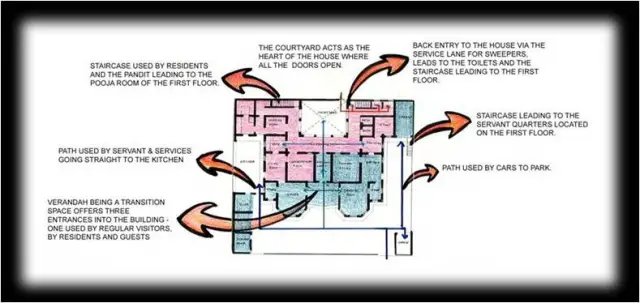
- There is not much vertical zoning as the family lived as a unit.
- As the first floor is built in three parts.
- The rooms are not separated by any corridor or any other space and open into each other at the cost of individual privacy.
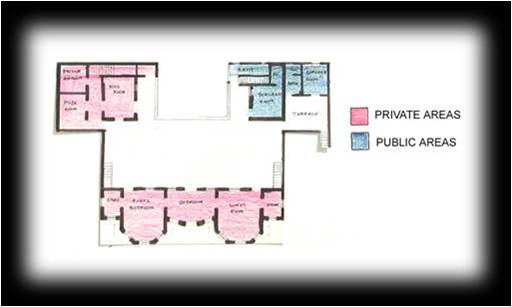
CLIMATE AND UTILITY PATTERN:
- The north is along the diagonal.
- It is a south west facing with maximum fenestrations.
- North east is guarded by biulding beyond and courtyard in north east.
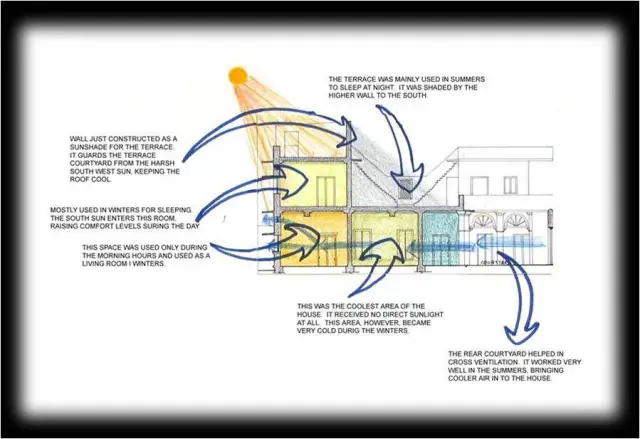
There is sequence of spaces being used with changing solar angle and seasons.
FOUNDATION AND ROOM SIZE RESTRICTIONS:

Foundation 12’ deep, of stone slabs resting on walls.
- As the roof was made up of stone slab so the room size was restricted to 10’, where ever required to increase the size of room iron girders were used as beams.
By: Atisha Varshney

i feel like its good and
i feel like its good and thoroughly detailed.nice.
i want more details about
i want more details about jaipur architecture